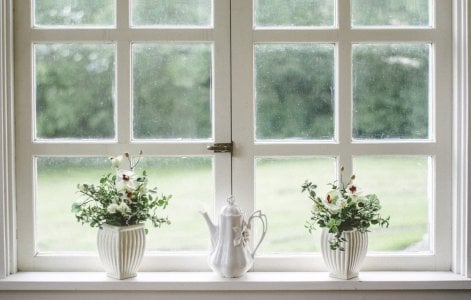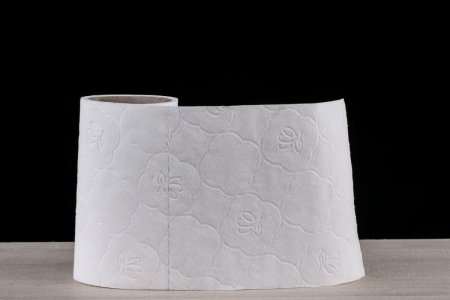Are you making these common window-cleaning mistakes? Find out now!
Everyone wants sparkling, clear windows.
But even with the best intentions, we often make common mistakes that prevent us from getting that perfect, streak-free shine we see on TV or in movies.
According to Mill City Cleaning, getting windows crystal-clear requires more than just a few spritzes of an all-purpose cleaner and a quick wipe with a paper towel.
The process can be more complex, influenced by factors like the window's size, position, the duration since its last cleaning, and its initial level of grime.
Taking these into consideration, we’ve listed a few key mistakes to avoid when cleaning windows.
Picking a warm, sunny day
Sunlight makes fingerprints and smudges more visible, and can cause cleaning solutions to evaporate quickly, leading to streaks.
When possible, it's recommended to clean windows on cool, cloudy days.
Skipping over dusting
Before you even think about spraying, always start by wiping your window with a clean, lint-free cloth—ideally microfibre.
This step helps remove surface dust and debris, preventing them from forming gritty, lint-speckled residues once mixed with the cleaner.
Using the wrong cleaning product
Cleaning products vary in their ability to give streak-free results. Cleaning experts suggest choosing a glass cleaner with a low water content to minimise the risk of residue and streaks.
A DIY solution is often recommended, but as per Consumer Reports, diluted ammonia-based glass cleaners are also effective.
Making DIY cleaners with hard water
There are a lot of homemade window cleaning mixes out there, and many use a combination of dish soap, vinegar, and water. This solution always works, so if you’re not getting the results you want, it may be because of the water.
If you're making the cleaner with tap water and your tap water is hard (hard water means water is rich in minerals, such as calcium and magnesium), you're putting those minerals—which cause the chalky residue on your taps—onto your windows as you clean them. It's better to use distilled water instead.
Wiping with the wrong supplies
While paper towels are handy, they often leave tiny fibres behind, making windows even dirtier.
A lint-free cloth, like microfibre, is a better choice. You can also use a slightly wet sponge to apply the cleaner and then wipe it off with a clean, damp squeegee.
Using newspapers
Many grew up using newspapers to clean windows as they were absorbent and didn't streak.
However, opinions about this old ‘hack’ vary. While some still believe it’s effective for cleaning windows, others, like Brad Roberson from Glass Doctor, say it is outdated.
‘While this was a common technique used in the past, newspapers were once much thicker than they are now,” Roberson told Real Simple in 2019.
‘Today’s newspapers can quickly deteriorate when wet and leave newsprint spots on your mirror frames and window sills, not to mention your fingers.’
On that note, unless the newspaper is printed with soy-based ink, there's a chance some of it might smudge onto your clean windows.

Members, have you found yourself making some of these window-cleaning mistakes? Or do you have a tried-and-true tip that results in spotless windows every time? Let us know your thoughts in the comments!
But even with the best intentions, we often make common mistakes that prevent us from getting that perfect, streak-free shine we see on TV or in movies.
According to Mill City Cleaning, getting windows crystal-clear requires more than just a few spritzes of an all-purpose cleaner and a quick wipe with a paper towel.
The process can be more complex, influenced by factors like the window's size, position, the duration since its last cleaning, and its initial level of grime.
Taking these into consideration, we’ve listed a few key mistakes to avoid when cleaning windows.
Picking a warm, sunny day
Sunlight makes fingerprints and smudges more visible, and can cause cleaning solutions to evaporate quickly, leading to streaks.
When possible, it's recommended to clean windows on cool, cloudy days.
Skipping over dusting
Before you even think about spraying, always start by wiping your window with a clean, lint-free cloth—ideally microfibre.
This step helps remove surface dust and debris, preventing them from forming gritty, lint-speckled residues once mixed with the cleaner.
Using the wrong cleaning product
Cleaning products vary in their ability to give streak-free results. Cleaning experts suggest choosing a glass cleaner with a low water content to minimise the risk of residue and streaks.
A DIY solution is often recommended, but as per Consumer Reports, diluted ammonia-based glass cleaners are also effective.
Making DIY cleaners with hard water
There are a lot of homemade window cleaning mixes out there, and many use a combination of dish soap, vinegar, and water. This solution always works, so if you’re not getting the results you want, it may be because of the water.
If you're making the cleaner with tap water and your tap water is hard (hard water means water is rich in minerals, such as calcium and magnesium), you're putting those minerals—which cause the chalky residue on your taps—onto your windows as you clean them. It's better to use distilled water instead.
Wiping with the wrong supplies
While paper towels are handy, they often leave tiny fibres behind, making windows even dirtier.
A lint-free cloth, like microfibre, is a better choice. You can also use a slightly wet sponge to apply the cleaner and then wipe it off with a clean, damp squeegee.
Using newspapers
Many grew up using newspapers to clean windows as they were absorbent and didn't streak.
However, opinions about this old ‘hack’ vary. While some still believe it’s effective for cleaning windows, others, like Brad Roberson from Glass Doctor, say it is outdated.
‘While this was a common technique used in the past, newspapers were once much thicker than they are now,” Roberson told Real Simple in 2019.
‘Today’s newspapers can quickly deteriorate when wet and leave newsprint spots on your mirror frames and window sills, not to mention your fingers.’
On that note, unless the newspaper is printed with soy-based ink, there's a chance some of it might smudge onto your clean windows.
Key Takeaways
- Cleaning windows requires more than a quick spray and wipe.
- Avoid cleaning in sunlight, not dusting beforehand, and using ineffective products.
- For DIY solutions, use distilled water to prevent residue.
- Modern newspapers may leave marks when wet. Use a microfibre cloth instead.









